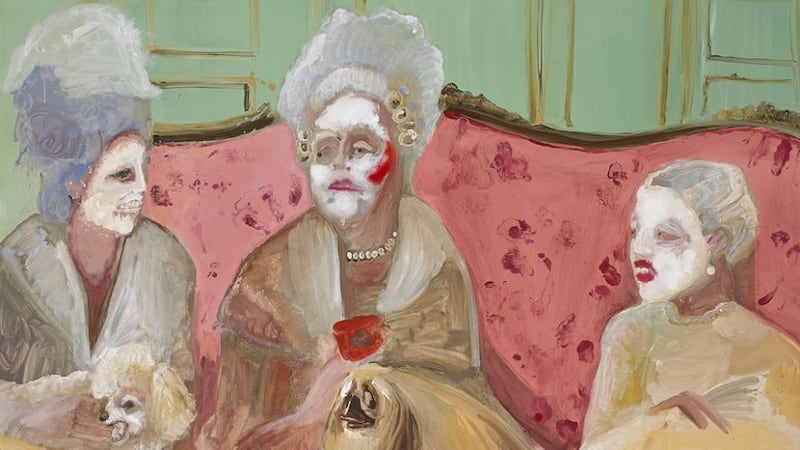Ever since Marcel Duchamp used a urinal to make the point that anything can be art, if an artist says it is: anything can, and has been, art. But what is the difference between someone who makes art as a hobby, and an actual real life, no-messing-about artist? Crucially, an artist has something to say through their work, but they also want it to be seen in the world. Originally from Wicklow, Helen Williams moved via Dublin to what she describes as “a charming but damp cottage near Union Hall [in west Cork], where my husband fished commercially and our young family had an idyllic childhood”.
Sounds lovely, but is providing idyllic childhoods conducive to making art?
Williams describes years of “painting in snatches between work and family commitments”. Now a full-time artist, she works mainly from her home studio near Kinsale. “Deciding to put your art out there is nerve-racking,” she says. “But you can’t keep it under the bed forever.” Instagram is a good way to make connections with fellow artists and audiences. Irish artist Genieve Figgis’s stellar international career followed being “discovered” on Instagram, but that’s the fairy tale. For most artists, it’s a slog that can feel lonely.

Everyone on Instagram looks more successful than me
Social media can be misleading. It’s a great tool, but keep it in perspective. Balance it with a real-life network. “Kinsale Atlantic Artists (KAA) started off in my studio a few years ago,” says Williams. “It grew from a small group of art college mates.” With 14 members, they have weekly meetups for “workshops, exhibitions, arty chats and lots of cake”.
Next step is a gallery
“Do your homework,” advises Williams. Would your art fit in? Pick your target and check them out. Does it have single artist shows with prices in the upper tens of thousands? Probably not great for a first-timer. Or is it a friendlier spot with works hanging floor to ceiling? “Chat to the owner. Pick a quiet time and bring in examples.”
Forget the gym: Here’s four fitness lessons from around the world
An Irishman at Oxford: It was an education in being an outsider. I felt alienated from the very start
My brother Ian Bailey: ‘He pleaded his case and begged me to keep in touch, and I did’
Diary of a retrofit: It cost €60,000 but it is worth every cent
But don’t turn up with a suitcase
Put yourself in the gallery owner’s shoes. It can be daunting when someone comes in with a huge pile of paintings. Find a connection, if you can. Then, ideally, if your chat is going well, you might just happen to have a couple of things outside. Anyone selling your work will need to see the real thing. Williams favours relaxed spaces, “the galleries I like and am represented in combine artwork with crafts and maybe a cafe”.
Don’t take rejection personally
Someone once wrote that if you want to be successful you have to aim at seven rejections a week. That seems like a lot, but it does mean you shouldn’t be daunted when you get a knock back. Not everyone likes the same things. Get to know the opportunities in your locality. Arts centres often have open submission shows, small arts festivals champion local artists, and restaurants can be on the look out for local work.
And be professional
“Galleries normally take a commission of approximately 40 per cent,” explains Williams. This is reasonable: they’re paying for the building, staffing, marketing and keeping the lights on. They can help with pricing, and you should expect to be paid within a few weeks of a sale. “Have a delivery book to record where your work is, dates and so on. And visit the gallery every few weeks to stay in touch.”
See work by Helen Williams at The Boathouse Gallery Kinsale, Yellow Door Baltimore, Grey Heron Bandon, Cill Rialaig, Ballinskelligs, Chalk and Easel, Ballinspittle, and at instagram.com/helenwilliamsartist














